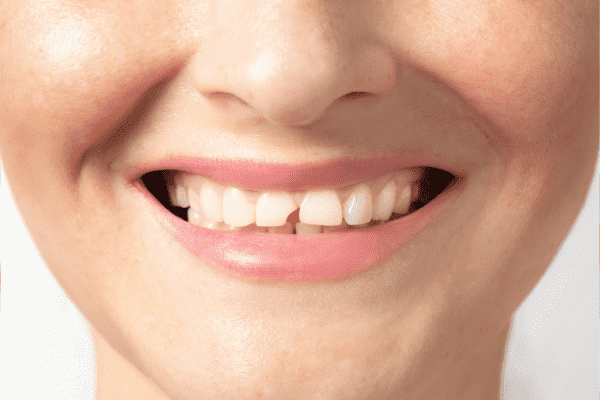If you are enjoying your favourite snack and suddenly feel a sharp crack in your mouth, discovering a broken tooth can be alarming and painful. Whether it’s a molar that is split in half or a minor chip, knowing the proper ways to handle the situation can prevent further complications. So, why wait anymore? Read this blog until the end and embark on your journey to a healthier and brighter smile now!
What to Do When You Break a Tooth?
Seeing a dentist as soon as possible is crucial if you break or chip a tooth. Since a broken tooth does not heal on its own, a delay in treatment can lead to more severe issues, such as oral infection or tooth loss. Although small cracks or chips do not cause much pain, inform the dentist immediately. This helps determine underlying damage and arrange a suitable treatment plan. However, it’s vital to seek immediate attention in more severe cases where pain or bleeding is involved.
If the injury is accompanied by profuse bleeding that doesn’t stop or if it occurred alongside other trauma, a visit to the emergency room may be necessary. But in most cases, you’ll be able to manage the situation with a few initial steps before getting professional help.
Saving the Broken Tooth
Here are some ways to preserve a broken tooth that help the dentist repair subsequent damages. It is good if you can visit the dentist immediately, however, if you are unable to do so – carefully rinse the broken piece with water or saline solution. Also, if possible, place it back into the gum. Be sure to handle the tooth by the crown and avoid touching the roots, which could lead to contamination.
If you can’t see a dentist right away, store the broken piece in a container filled with saline solution to keep the tooth viable for a longer period (up to 24 hours). This increases the chances that your dentist can use the broken piece to restore the tooth.
Rinsing and Cleaning the Mouth
Rinse your mouth with warm water with a small pinch of salt added to clean the area around the broken tooth. This helps to remove food particles and prevent bacterial growth, leading to infection. However, if the tooth is bleeding, gently bite down on a clean piece of gauze or cloth to help stop the bleeding.
Managing Pain
A broken tooth can be extremely painful, especially if the nerve is exposed. You can take over-the-counter pain medications like ibuprofen or acetaminophen to manage the discomfort. Follow the dosage instructions on the label to avoid complications. Applying a cold compress or ice pack to the outside of your cheek near the broken site can reduce swelling and relieve pain.
Avoid Certain Foods
It is always best to avoid hard, crunchy, or sticky foods, as they unnecessarily pressurise the affected region. Also, do not eat extremely hot or cold foods that increase sensitivity or cause pain. Ensure you have gullible foods and chew them from the opposite side of your mouth to avoid worsening the affected tooth.
How a Dentist Repairs Broken Teeth?
Once you see a dentist, they will assess the extent of the damage and recommend a treatment plan based on how severe the break is. Fixing a broken tooth can range from simple procedures for minor chips to more complex treatments for serious fractures.
Here are the most common methods dentists use to fix broken or chipped teeth:
- Smoothening the Tooth: For small chips, the dentist may smooth the rough edges with a dental file. This is a quick and easy solution that improves comfort and appearance.
- Dental Fillings: If the break or chip is more significant but has not damaged too much of the enamel, the dentist may use a filling material to close the crack or fill the chipped area. This strengthens the tooth and protects it from further damage.
- Veneers: If the front-facing surface of a visible tooth is chipped or cracked, the dentist may recommend a veneer. This thin shell covers the tooth to restore its appearance and protect it from damage.
- Dental Bonding: Similar to veneers, bonding uses a resin material that is shaped and applied directly to the tooth. It can be used to repair chips or even cement a broken piece of the tooth back into place.
- Dental Crowns: For more serious breaks, especially cracks in molars and tooth breaks into half, a dental crown is the best solution. These customised crowns are put above the broken region, restoring normalcy in shape, appearance, and function. They also protect the broken tooth from further decay and damage.
- Root Canal Treatment: If the break extends deep enough to damage the root or pulp (the soft tissue inside the tooth), the dentist may need to perform a root canal. This procedure involves removing the damaged tissue, cleaning the internal pulp, and sealing it. After that, an external cap or crown is put over to ensure added protection.
- Tooth Extraction: In cases where the break goes below the gum line or the root is fractured, a tooth extraction remains the only option. Once the tooth is removed, the patient can replace it with a dental implant, bridge, or dentures to restore function and appearance.
What Happens if a Broken Tooth Is Left Untreated?
Ignoring a broken tooth is never a good idea because the damage won’t heal on its own. In fact, leaving it untreated can lead to more serious dental issues. Pain and swelling are common, especially if the break is deep, affecting the nerve or exposing sensitive layers of the tooth. The tooth may bleed and become sensitive to heat or cold, making everyday activities like eating uncomfortable.
A jagged edge from a broken edge can also irritate the inside of the mouth or tongue. Additionally, a break can interfere with the alignment of your bite, leading to jaw pain and shifting teeth.
More concerning is the risk of infection. A break in the tooth’s enamel opens the inner layers to bacteria, which can cause cavities. If the crack reaches the root, an infection can develop in the pulp, leading to more severe conditions like a dental abscess or pulpitis. In such cases, a root canal or even extraction may be necessary.
Conclusion:
Whether the break is minor or severe, it’s essential to consult a dentist. It may sometimes be unclear how severe the damage is, thus prompting a dental professional to assess the situation appropriately. Quick action helps prevent complications like infections and decay and, most importantly, eliminates the need for future expensive treatments.
If you need emergency dental care, use an online search tool to quickly find a dentist. Don’t delay—visit this website to book an urgent appointment at a dental clinic in London!



